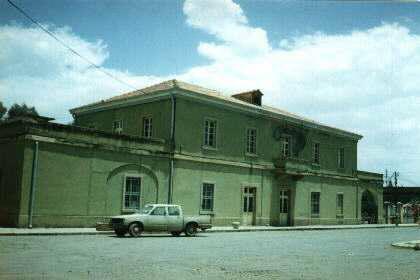
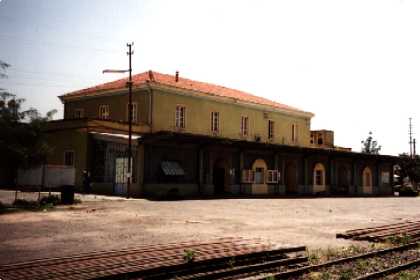

This shows the station from the opposite end as the view shown on Renato's
picture on the Asmara Station
Page. Here, there are a few freight wagons near the other end
of the station.
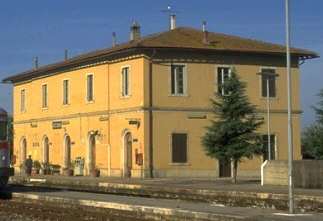
Photo from Italian Railfans site. Stefano Paolini©1996
The trackside of the Asmara station shows a remarkably similar building
in the station at Asciano, Italy. Renato Gaudio tells me of a common
design bureau for the Italian Railway equipment. One can believe
from the above pictures that the same holds true for buildings.
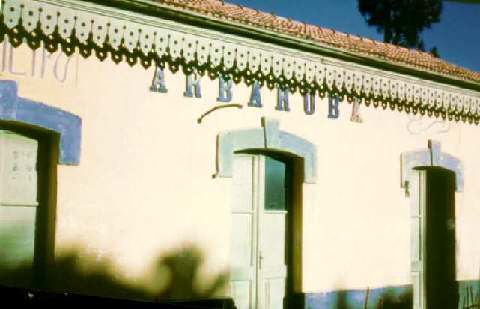
Above is the train station at Arbaroba. The lace work at the
building's edge is common among the buildings east of Asmara. It
must be reflective of the era in which they were built.
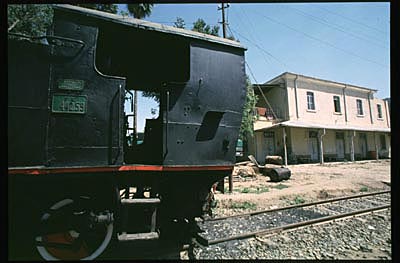
A. Raffaele Ciriello©
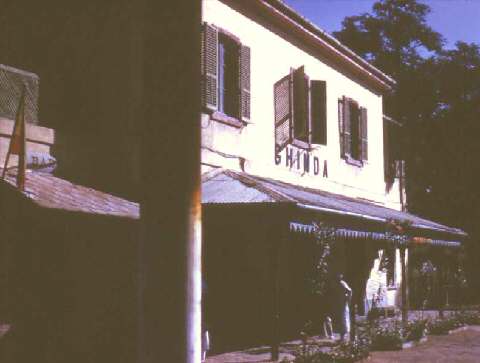
Ralph R. Reinhold©1962
It is interesting to note the commonality of design with the Mai Atal
Station from A. Raffaele Ciriello and my picture of the Ghinda Station.
It is also interesting to note that the station in Keren is different
from the buildings between Asmara and Massawa.

Photo courtesy of Jerry Pry
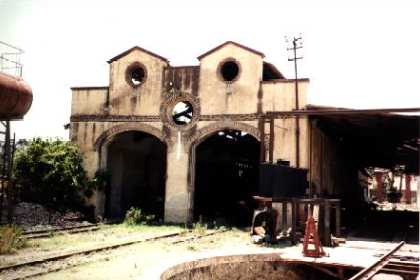
Hans van der Splinter©2000
During his visit this year, Hans got a good picture of the engine house.
This is the same basic design as the shop in Massawa.
Notice how the style of the railway buildings contrasts with Art Deco buildings from the city of Asmara.
I have accrued some data on structures from Jane's World Railways Also, the buildings between Asmara and Massawa are identified on the profile of the line.
The rail used is 9 meter 3 tonne rail which requires 8 men to move.
This information comes from an article in Figaro Magazine. I do not
know how this compares to US rail. My memory of its looks tells me
that it is much less than 100 pound rail. 3 tonnes over 9 meters
would be about 220 pound rail. In
Short Description of System, Eritrean Rail 24.9 kg/m. This is
about 50 pound rail. This is about what I remember.
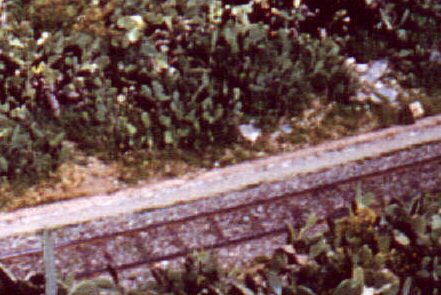
Photo cropped from one courtesy of Tom Johnson
The sleepers also are steel. This is both why they were used
for war bunkers and why many survived. The Eritrean climate is quite
arid and steel would deteriate slowly. Insects are agressive and
wood would be very expensive and not last long. Surely, it would
never have lasted since at least the 1930s.
Unguarded crossings
are marked much the same as they are in the US.
SEARCH
All copyrights remain with the original sources. No permission
is granted for further use with out their expressed consent

Home |

Scrapbook |
| Who | What | Why | When | Where |